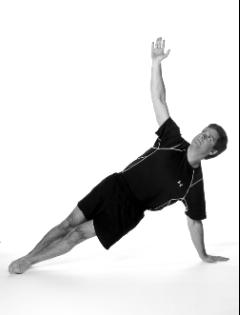One of the most frustrating scenarios we face is when we finally make that commitment to improving our health, and start to work out, and then discover ourselves sidelined due to an injury. Let’s take a simple look at how to best avoid getting injured, and what to do should our precautions fail.
We'll all cope with an injury of some kind during our lifetimes. Accidents are inescapable. But when you're exercising to improve your health, physical setbacks are more frustrating than normal. On the flip side, if you don't exercise, your body will age faster and break down quicker. Looking at the big picture can help motivate you to get into a routine of exercise. Nothing, however, can derail this motivation faster than a nagging injury. After all, you may only be exercising to make yourself feel better. And injuries make you feel worse. But before you resign yourself to the "what's the point?" attitude, read on. I'll show you how to greatly reduce your chance of getting injured in the first place. Next week, I'll discuss how you can get back on your feet quickly when you do get injured.
Warming up
Warming up seems like a waste of time to you- you may be missing the point. Who hasn't, at one time or another, jumped right into an intensive workout like and walked away unharmed? But if you want to remain uninjured, nothing stacks the odds in your favor as much as thoroughly warming up your body to get it ready for exercise.
Injuries aren't just accidents.
Putting stress on a cold system can cause acute injury, even with resistance that you can normally handle easily. The reason is that when you're cold, your muscles are actually gel-like. As they warm up, they become more viscous, kind of like oil in your car engine. As you increase your heart rate, your core body temperature heats up. When this happens, your muscular viscosity decreases, and you become more supple and ready to handle the stresses of exercise.
A proper warm-up starts out slow and gradually increases in intensity. Once your blood is moving, easy, functional stretches (like the daily dozen in the book) help elongate your muscles so that they're ready for the intense contractions that will happen later. Note that long, slow stretching should be avoided as part of the warm-up. The type of stretching that you do to increase your flexibility should be done post-exercise. Pre-exercise stretches should remain very low on the intensity scale. They serve only to loosen up the body to its current range-of-motion abilities, not to increase that range.
This is your first step to improving your odds in preventing a workout injury.
Until next time
Keep on Training!

No comments:
Post a Comment